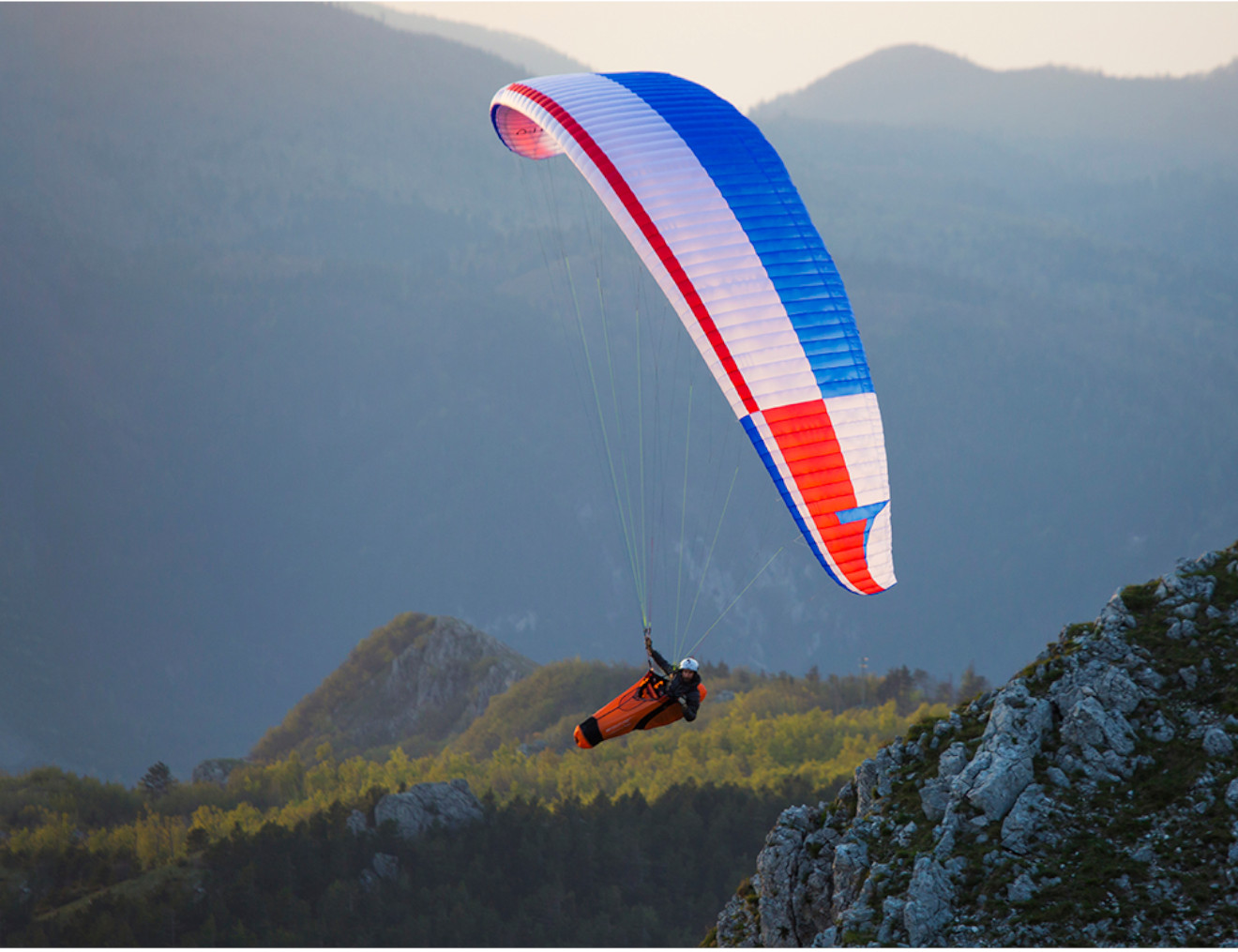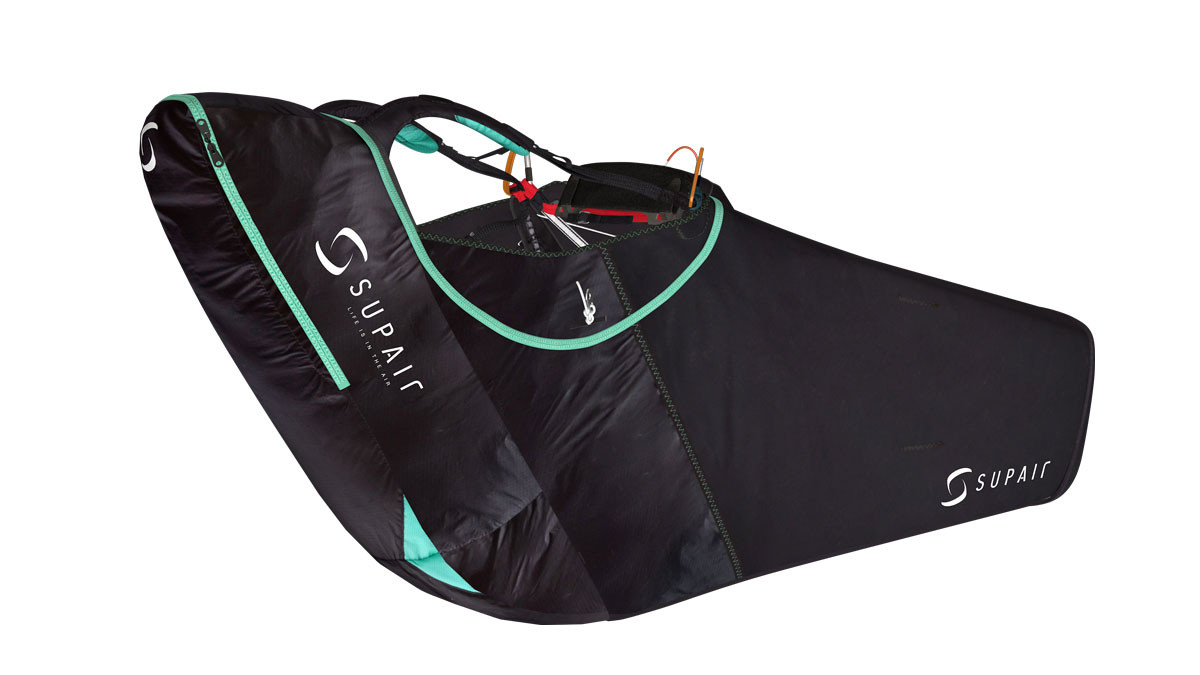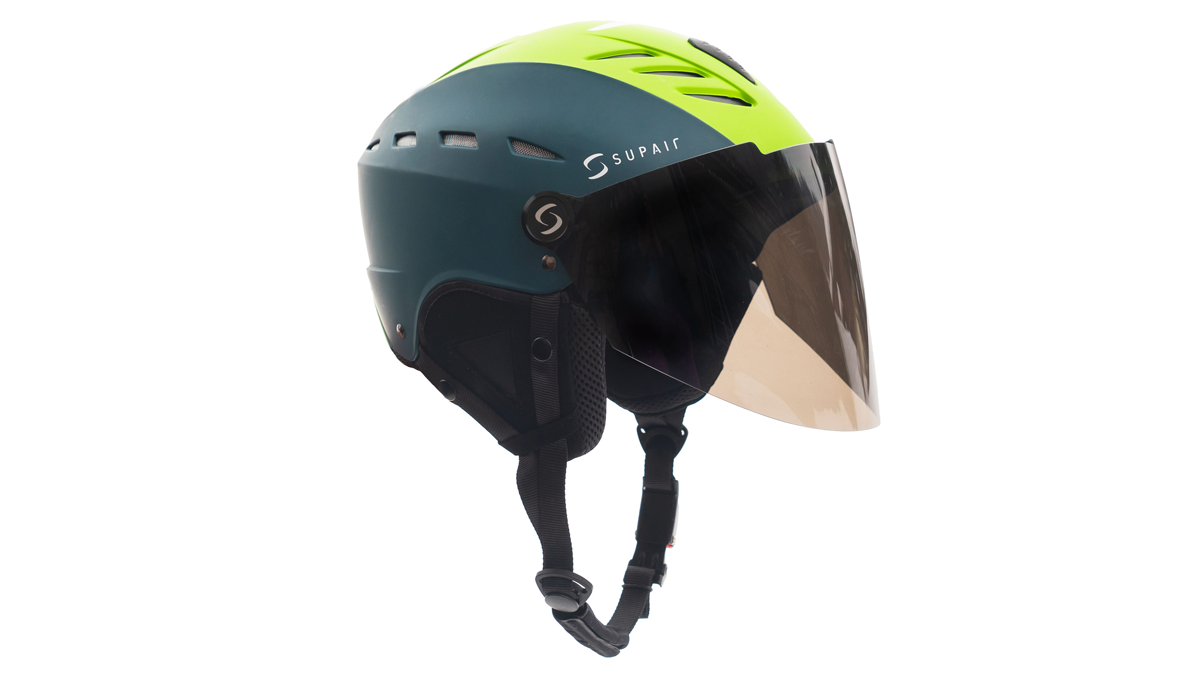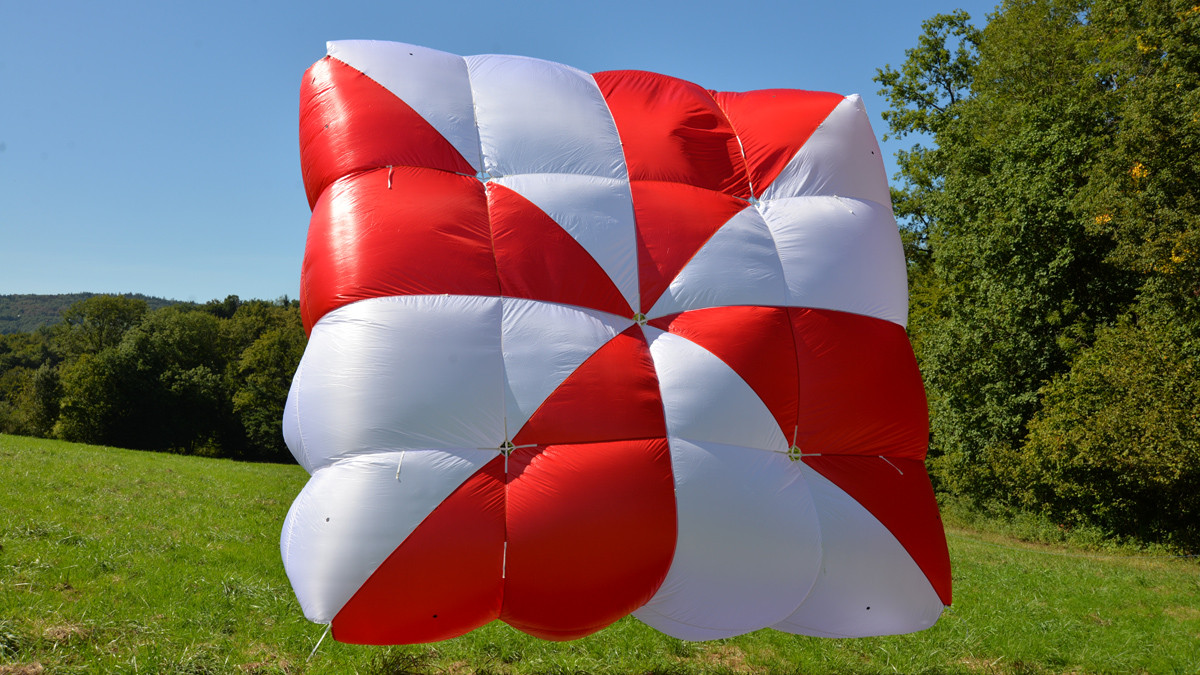Queen 2 SM de 777 por Ziad Bassil

Finalmente llegó el tan esperado reemplazo de la Queen. Triple Seven Paragliders ofrece la nueva Queen2 con alargamiento de 6.3 combinado con unas líneas muy reducidas y una nariz de tiburón muy puntiaguda. Las aberturas de las bocas son bastante pequeñas
Finalmente llegó el tan esperado reemplazo de la Queen. Triple Seven Paragliders ofrece la nueva Queen2 con alargamiento de 6.3 combinado con unas líneas muy reducidas y una nariz de tiburón muy puntiaguda. Las aberturas de las bocas son bastante pequeñas. Los puntos de anclaje en las A's parecen estar más retrasados, y la certificación es una EN C.
El despegue de la Queen2 en tamaño SM con viento cero necesita una carga constante para que se infle fácilmente y suba arriba de tu cabeza. La subida es bastante buena para un ala con certificación EN C.
Volé el Queen2 entre 96 a 99, para descubrir que el mejor peso esta alrededor de 98-99 para la talla SM en un día de buenas condiciones. El recorrido del freno es corto, lineal y preciso. La presión sobre los frenos es de ligera a "ligeramente" dura. El parapente se siente conectado a los mandos del piloto si se respeta la carga en el peso superior. La Queen2 SM es ligeramente sensible a la carga. Quiero decir que es mejor volar de 97 mínimo a 99, incluso 100, donde notarás inmediatamente la diferencia con 2 kilos añadidos.
El Giro en termica:
El Queen2 SM cargada puede hacer giros muy estrecho dentro de las térmicas. Es como si estuvieras volando un parapente de menos alargamiento del que tiene. En térmicas bien construidas, a veces se siente como si fuera una 'tapa a rosca’! Esta capacidad en térmica es eficiente para sacar el máximo provecho de cualquier térmica!
El ala no se balancea si los frenos se accionan suave y rápidamente, para dar un radio de giro plano, rápido y eficiente.
Capacidad de trepada:
En núcleos turbulentos y llenos de fuerza, ¡la Queen2 sube muy rápido! La precisión del freno se reduce ligeramente en núcleos turbulentos, pero sigue estando presente y es muy buena para un parapente de alargamiento 6.3 EN C. Su capacidad de escalada es de las mejores de la clase EN C, incluso en la parte mas alta de la tabla. Esta es definitivamente una máquina trepadora muy rápida en térmicas bien montadas. Por supuesto, cualquier ala EN C trepará también, pero no tan rápido.
En condiciones flojas, el Queen2 SM a 99 es eficiente en la captura de pequeñas térmicas débiles. En realidad la Queen2 SM tamaño se siente grande, y con un peso de 99 no parece estar realmente sobrecargado. En condiciones flojas a carga máxima, lo encontré bastante eficiente en la escalada.
Velocidad y acelerador:
La velocidad de planeo es más rápida que la Delta 3 SM con aproximadamente un kilómetro/hora, y también más rápida a máxima en 1 kilómetro/hora, si ambas están completamente cargados. Además, la Queen2 SM a 99 tiene 0.5km/h menos velocidad de planeo que una Cayenne 5 S (85-105) volada a peso máximo, y es más rápida a máxima velocidad por aproximadamente 2 km/h que la cayena 5 S. El tamaño (ambos completamente cargados)
Planeo:
Descubrí que el Queen2 en tamaño SM tiene su mejor planeo a velocidad de mandos sueltos, y está entre las mejores EN C's del momento!
Haciendo muchas transiciones en aire calmado y turbulento con algunos de planeo con viento en contra, descubrí que el Sigma 10 y el Delta 3 tienen ese limite muy fino con el acelerador, especialmente a 4km/h sobre velocidad de planeo!
La Delta 3 SM tiene un poco menos de velocidad máxima que la Queen2 SM, pero si la Queen2 SM coincide con la velocidad máxima de la Delta 3 SM, el planeo a esa velocidad máxima es casi idéntico.
La velocidad máxima y su velocidad inmediata de ascenso mientras planea, podría dar una ventaja a la Queen2 en el planeo sobre las crestas.
Facilidad en vuelo:
Para un parapente de alargamiento 6.3 con estas prestaciones TOP, descubrí que el Queen2 es más fácil de llevar en aire turbulento que el Cayenne 5 XS que se había mantenido como referencia. Bajo la Queen2 se puede describir como: sólida, confortable, homogénea, de estructura resistente, absorbe la turbulencia. Se parece la Delta 3 pero con un poco de especias. Encaja exactamente entre el Cayenne 5 XS y el Delta 3 en la demanda de pilotaje.
Tambien digo que siento que la Queen2 tiene bastante energía escondida en ella. En los wing overs se siente muy dinámicos y fácil de hacerlos. Y también, en algunas térmicas fuertes, el carácter tranquilo del parapente despierta levemente a un parapente más fino que muerde ligeramente hacia delante las térmicas, lo que es bastante común para cualquier parapente EN C de gama alta. No hay cabeceo en absoluto! que es agradable :-)
Conclusión:
Hoy en día los diseños de parapente y el progreso parecen muy exigentes. Los fabricantes están trabajando muy duro para poner la barra un poco más alto!
Sentí que en el modo XC, los nuevos top 3, EN C's pueden estar muy cerca.
El Queen2 cargada en la parte superior, es un parapente EN C, que puede ser volado con bastante eficiencia en las competiciones de XC y que satisface casi a cualquier piloto que busca rendimiento y velocidad en una EN C, especialmente por su alto paquete general (escalada, planeo y velocidad máxima)
Texto Original en ingles
Triple Seven Queen 2 SM
Finally the long awaited Queen replacement arrived. Triple Seven offers the Queen 2 with an aspect ratio of 6.3 combined with very reduced line diameter and a very pointed shark nose. The cell openings are rather small. The attachement points on the A’s seems further back, and the certification is into the C box.
Launching the Queen 2 in size SM in nil wind need a steady input as it inflates moderately overhead. The rise is moderate and fairly ok for a C certified glider.
I flew the Queen 2 from 96 to 99 ,to find out that the best weight is around 98-99 on the SM in moderate conditions. The brake travel is short, linear and precise. The pressure on the brakes are moderate to ‘slightly’ hard. The glider feels connected to the pilots commands, if the load at top weight is respected. The Queen 2 SM is slightly sensible to load. I mean it’s better to fly it from 97 minimum to 99..100, and you will notice immediately the difference with 2 kilos added.
Thermal radius:
The Queen 2 SM loaded can be turned very narrow turns inside the thermals. It’s like you are flying a low aspect ratio glider. In well built thermals, it’s feels like a spinning ’top’ sometimes ! This narrow thermal ability is efficient to get the most out of any thermal !
There are no banking from the glider if the brakes are applied moderately and swiftly, but a flat quick, and efficient turning radius.
Climbing ability:
In turbulent and punchy cores, the Queen 2 climbs really fast! The brake authority are slightly reduced in turbulent cores, but still present and very good for a 6.3 AR, C glider. It ressembles the best ones in the C class in climbing ability even loaded at top. This is definitely a very fast climbing machine in well built thermals. For sure, any C glider will climb also, but not as fast.
In weak conditions, the Queen 2 SM at 99 is efficient in catching small weak thermals. Actually the Queen 2 SM size feels big, and a weight of 99 all up is doesn’t seem to be really over loaded. In weak conditions at max load, i found it quite efficient in climb.
Speed ,trim, and top:
The trim speed is faster than the Delta 3 SM by approximatively one km, and also faster by 1 km at top speed if both are fully loaded. Also, the Queen 2 SM at 99 all up has 0.5km/h less trim speed of a Cayenne 5 S (85-105) flown at max weight, and it’s faster at top by approximatively 2 km/h than the cayenne 5 S size. (Both fully loaded)
Glide:
I found that the Queen 2 in SM size has its best glide angle at trim speed, and it’s among the best C’s of the moment !
Doing lots of glides in calm and turbulent air with some headwind glides, i found out that the Sigma 10 and the Delta 3 has that very slight edge at bar, especially at 4km/h over trim speed !
The Delta 3 SM has slightly lesser top speed than the Queen 2 SM but if the Queen 2 SM matches the Delta 3 SM top speed, the glide at that top speed is almost identical !
The fast trim speed and the immediate climb rate while going forward, could give an edge to the Queen 2 in ridge gliding.
Easiness of flight:
For a 6.3 aspect ratio glider with those top performance, i found out the the Queen 2 is easier to handle in rough air, than the Cayenne 5 XS i have kept for reference. The feeling under the Queen 2 can be described as : solid, comfortable, homogenous, tough structure, absorbs the turbulence. It ressembles the Delta 3 feel but with a little spice. It fits exactly between the Cayenne 5 XS and the Delta 3 in pilot demand.
Saying that i also feel that the Queen 2 has quite some hidden energy in it. It feels very dynamic in wing overs that could be quickly very high. And also, in some strong thermals, the glider quiet character wakes up slightly to a sharper glider that bites the thermals going forward slightly which is quite common for any high end C glider. There are no pitch back whatsoever ! which is nice ![]() :-)
:-)
Big ears have moderate stability, they usually flap, shake a bit sometimes, but reopen quickly.
Conclusion:
Today’s paragliding designs and progress seems really demanding. Manufacturers are working super hard for getting the bar slightly higher !
I felt that in XC mode, the new top 3, C’s can be very close.
The Queen 2 loaded at top, is relatively a moderate C glider, that could be flown quite efficiently in XC competitions and will satisfy almost any performance and speed seeker in the C class especially for its high (overall package) of climb, glide and top speed.
Autor: Ziad Bassil
Link al post: http://ziadbassil.blogspot.com.es/2017/12/triple-seven-queen-2-sm.html?m=1




Comments
Leave your comment